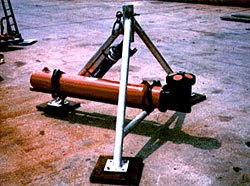For example, researchers at the University of Washington frequently want to deploy Acoustic Doppler Current Profilers (ADCPs) or other devices to take measurements under water over the course of weeks, months or longer. Running power through a cable from shore is impractical and costly, but the alternative actually used has a stiff price too: a disposable battery that costs $500 and lasts a mere 10 days, after which it must be replaced. In addition to the recurring cost of replacement batteries, there is the enormous cost of a boat and crew to do the replacement--often $1,000 per hour or more. In the deeper ocean farther form shore, boat costs can easily top $100,000 per day.
For small ocean power, the Hydrovolts turbine paired with a rechargeable battery replaces the current disposable battery solution, providing a capital ROI of substantially less than one year.
Oceanographers from the University of Washington have worked with the Hydrovolts technology and have validated the basic performance and power output for a scale device during tow tests in Lake Union. This month Hydrovolts will send a prototype to the Woods Hole Oceanographic Institution (WHOI) for further testing and validation.
Oceanographers are not the only ones interested in powering remote ocean devices. Various kinds of navigation buoys and other equipment used by coast guards and harbor authorities also need electricity. Military devices used for monitoring can be thousands of miles from shore and far below the surface. The cost of retrieving and replacing batteries for such devices in remote and austere environments is extreme. In addition, some of these devices are militarily or politically sensitive; there is also great value in not visibly attending them.
If power were available for extended periods far to sea, there are many other civilian devices that would become more practical to deploy. Tsunami warning devices have obvious value to NOAA and others. Remote devices that monitored advancing weather far to sea would allow improved coastal weather prediction, benefiting commercial fisheries, beach businesses and the general public.
Small wind power could be used for some remote power generation needs, but practically only for surface devices. Solar power could also be used in theory, but is even less well suited due to the difficulty of proper orientation and of keeping them clean. Both would necessarily be in the extremely harsh environment at the ocean surface. A Hydrovolts turbine, spinning below the surface would be subject to significantly less corrosive and mechanical stresses. The Flipwing design is also well suited to the low-speed ambient currents omnipresent in the ocean, because it can spin and make power even at speeds as low or lower than 1 knot (about 50 cm/s.)
Hydrovolts turbines, properly configured for the ocean environment can save money, sometimes a lot of money, for many organizations. They can also simplify logistics and enable the feasible deployment of many other useful and desirable equipment away from shore.








No comments:
Post a Comment